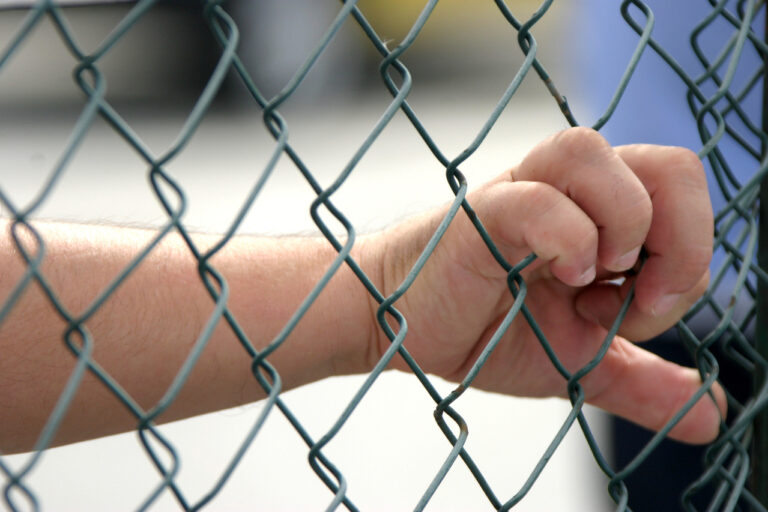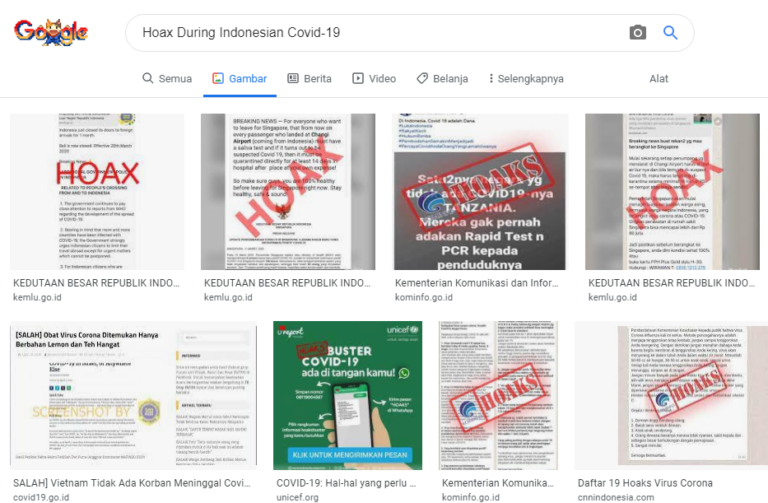Perception of Injustice as a Trigger of Terrorism

Some terrorist attacks in Indonesia has shifted from the use of conventional bombs made from ammonium nitrate fuel oil or ANFO to radioactive biological chemical weapons and nuclear weapons which on a large scale have the potential to become weapons of mass destruction. From the Journal of Terrorism Studies compiled by Yohanes Genius Putu Sanjaya, Arthur Josias Simon Runturambi, and Sidratahta Mukhtar the use of radioactive biological chemical weapons has occurred since June 2011 with an event known as Santhanam Poison Kemayoran.
In this incident, 6 members of a terrorist group who were still part of Jemaah Islamiyah under the coordination of Santhanam alias Santa alias BW alias WOI alias Goban carried out an attack at the Kemayoran Police Sector Headquarters, Central Jakarta. They smuggled poison made from forest jatropha seeds in the form of 250 ml of a reddish yellow liquid which was identified as cyanide but later it was discovered that the liquid was ricin poison and arsenic residue into the Kemayoran Police canteen to be mixed with food which was later served to the police. Fortunately the attack failed.
Six people including Santhanam were arrested by the Special Anti-Terror Detachment (Densus 88) in different locations. They were arrested due to the confession of members of the Poso group who shot the police by saying that they would spread cyanide poison in the police canteens and police dormitories. Santhanam and his partners in crime were charged with Law No. 5 of 2018 with multiple articles.
After that, in 2012 there was a bomb that was planned to be detonated in the city of Solo, Central Java, which used nitroglycerin with an analog clock as a delay trigger and a decorative light bulb as the initiator. The impact that arises with the use of this substance is the occurrence of shock, heat, changes in atmospheric pressure and friction.
In the journal entitled “Strategies for Preventing Terrorist Attacks in Indonesia Using Weapons Mass Destruction (WMD) by the Police, BNPT, Bapeten, TNI, BNPB and the Ministry of Industry, Detachment 88’s data on the use of chemical, biological, radioactive and nuclear weapons are presented. In the period 2011-2019, six terror attacks were recorded using chemical, biological, radioactive and nuclear weapons.
In addition to the delivery of poison at the Kemayoran Sector Police Headquarters and also the bomb in Solo City initiated by Badri Hartono of the JAD group, there are still 4 cases of terror attacks involving the use of Weapons Mass Destruction. Among them, the attack at ITC Depok using chlorine gas and black powder in 2015. Then in 2017 radioactive substances were found in the bombs assembled for the planned attack in Bandung using Thorium as well as explosives in the form of 12 kg of TATP in wet conditions.
Furthermore, the planned terror attack by Endang from the JAD group network in Bogor in 2019 used Nitroglycerin, TATP, a mixture of Acetone, Hydrogen Peroxide and HCL. Lastly, the planned bomb attack in Cirebon used a poison bomb containing Abrin with a concentration of 310 grams which also found other ingredients, namely Methanol, Urea and 5 liters of Nitric Acid.
Wartoyo, a former terrorism convict who was a perpetrator of Santhanam Poison Kemayoran who was also arrested with Santhanam and is now free, said that one of the reasons his group used castor beans was because it was very difficult and almost impossible to obtain cyanide.
“Cyanide was a very rare item at that time and not just anyone could get it, even if they could, it wasn’t just anyone,” said Wartoyo.
Wartoyo said that the decision to use jatropha seeds was taken after his leader, Santhanam, did a search on the internet about ingredients that could be used as poison. Until later it was found that castor seeds contain compounds that have an effect such as poison.
As for the reason why they chose to use poison instead of explosive weapons, Wartoyo said that from the start they realized that the group was only a small group and did not have the ability to take action using explosive devices such as grenades or bombs and thought of a simple method but with great impact. big and deadly.
Terrorism observer from Al Malikussaleh University, Al Chaidar sees that the use of chemical, biological and radioactive weapons in Indonesia will not become a trend, at least in the near future. In the case of Nitroglycerin in Solo, he said that it was just a coincidence because someone provided the materials, not because they had been able to make them or had access to them. Even though those who use it are from the JAD group, it cannot be said that it is a characteristic of JAD because not all JAD use it.
“They still use conventional weapons, such as homemade weapons. The use of chemicals and biologics is still limited to trial and error and has not succeeded,” said Al Chaidar.
According to Al Chaidar, weapons made from chemical and biological materials are still very difficult to obtain in Indonesia. Meanwhile, to make your own is also not easy. Gaining access to connect with suppliers also requires a high level of discipline. So, even though there are attacks using chemical and biological substances in Indonesia, the numbers are still very small and not massive.
Yusuf Adirima alias Machmudi Haryono was still very young when he was first introduced to the concept of injustice accepted by Muslims, this was around 1995. He was still in high school when he had a conversation with his “Rohis” friends about a film that was banned at the time by the Government. The movie tells about the conflicts in Bosnia and Herzegovina and Yusuf still does not recall the title of the movie.
Yusuf, who was curious, then approached one of his spiritual supervisors who was a staff member at the Ministry of Religion. At first, his wish for seeing this movie was rejected. But Yusuf, eager to satisfy his curiosity, kept insisting that he would be allowed to see the film. His wish was finally granted with the condition that Yusuf was not allowed to invite friends, and he was not allowed to tell about the film to any of his other friends.
After watching the film, various questions arose in Yusuf’s mind. Why are they fellow humans with the same skin colour and even having similar faces killing each other? And Yusuf’s memories of the scenes in the film, for which he had forgotten the title of, carried over in his memory for years after even after he graduated from school.
After his graduation from high school, Yusuf worked as a public relations officer at an Islamic boarding school or “Ponpes” in Jombang, East Java. As a public relations officer, he had a lot of contact with other “Ponpes” throughout the Country and because of it being Yusuf’s his job to make his “Ponpes” knowledge known, shared and accepted by the community as well as by the other “Ponpes” around the Country.
One day, Yusuf went to one of those other “Ponpes” owned by Amrozi (a death row convict for the Bali bombing I) in Lamongan, East Java. At Amrozi’s “Ponpes”, which was very small and located in the middle of the forest, Yusuf saw children aged 1st grade (7 years) to 6th grade (12 years old) being taught to hold weapons, it reminded him of scenes in the film he had witnessed before. At that time, Yusuf had started to get along with the Amrozi brothers, including Ali Gufron (Co-conspirator of the Bali Bombings).
After their relationships intensified, in 1999, Yusuf was informed by Ali Gufron about the inter-religious conflict in Ambon. Yusuf was offered to go there. Yusuf, who until that day still had various questions about why humans with the same skin color and similar faces killed each other, felt that he got the answer. They are in conflict because of religion and because of injustice, at least that is what he thought at the time.
He accepted the offer from Ali Gufron and left for Ambon in the year 2000 with the enthusiasm to defend his fellow Muslims who were oppressed in that area.
The Ambon conflict that occurred between 1999 and 2002 resulted with a number of dead victims varying between Tens, Hundreds or even up to the Thousands and was considered an inter-ethnic conflict that arose as a result of a misunderstanding between two youths who happened to be of different religions, namely Islam and Christianity.
In reality, Yusuf did not go to Ambon at that time. The ship that he was told would take him to Ambon did not stop at Ambon in the Maluku Islands at all. Its final and only destination turned out to be the Philippines. He was purposely sent to the Philippines to join Jemaah Islamiyah, which is affiliated with the Moro Islamic Liberal Front (MILF) and Al Qaeda. This is where he started to get involved with what he called “jihad”. Yusuf himself was arrested after he returned to Semarang, Indonesia and was later involved in the discovery of explosives and thousands of round of ammunition on Jalan Taman Sri Rejeki Selatan VII/2, Kalibanteng, Semarang on July 10, 2003 which became known as the Sri Rejeki Semarang Bombing case. Yusuf was later sentenced to 10 years in prison.
A researcher from the Political Psychology Laboratory at the University of Indonesia, Joevarian Hudiyana, said that in fact terrorism is a topic that must be viewed from various sides and is multi-level. However, if you look at how the spirit of terrorism started, Joe revealed that terrorism is indeed triggered by the perception of injustice.
“This injustice is a central issue. For example, issues of injustice in Indonesia are the narratives that are echoed among the narratives that are used to evoke the spirit of one’s jihad,” he said.
But for countries where the issue of injustice raised is not concrete enough for example being within the Republic of Indonesia, which is not a conflict country, then the injustice becomes just a perception. Usually using issues of injustice that occur abroad and which are judged to be in accordance with the description of the condition of Muslims who are in urgency or need, they are treated unfairly to raise the spirit of jihad.
But because of the fact that it is just a perception, it should not be enough to make someone take the life changing and important decision to get involved in an act of terrorism, there must be a main trigger which according to Joe comes from a person’s psychological side.
Meanwhile, Bart William, a Certified Anti-Terrorism Specialist and Teacher in the field of SKPD (Spesialis Keamanan dan Proteksi Domestik / Safety and National Security Specialist), said that the situation in Indonesia is not too favourable for any acts of terrorism. It is, according to him, against the ideology of “Unity by Diversity” which is the basis of the State Ideology of the Republic of Indonesia. This in combination with the majority of the People Living in Indonesia having a great kind heart with compassion with anybody plays according to Bart a major role in making Indonesia relatively safe when compared to other countries such as Yemen, Pakistan and Afghanistan.
“There is a general acceptance of a multiple religious society within the Republic of Indonesia implemented by the Founding Father, President Soekarno, and perfectly summarized in the State Ideology, “Pancasila” states Bart William. This, together with the established fact that a secret rarely stays a secret in the Republic of Indonesia contributes to lower amounts of the number of extremist acts and thoughts with the associated ideologies within our population,” he said.
In December 2020, a survey from the National Counterterrorism Agency (BNPT) stated that the potential index for radicalism decreased by around 12.2% or was in the range of 14.0 (on a scale of 0-100) when compared to the survey in 2019 which reached 38.4 ( on a scale of 0-100). This supports the findings of Bart William who added to this that the People of Indonesia, like nowhere else in the world, have the ability to make “everything” a topic of discussion. Any discussion could have the potential to become a conflict, however, in Indonesia besides a healthy dose of intimidation and/or threats this rarely becomes a physical act of war or something that could be considered an act of terrorism.
Bart William further said that the Government’s attitude towards its people also plays an important role in preventing the growth of radicalism, extremism and terrorism in Indonesia.
“Support for extremism will only grow when the Government stops listening to its citizens,”
Bart William, Certified Anti-Terrorism Specialist
At present, according to Bart, the Indonesian government has taken the right steps in dealing with terrorism in Indonesia. According to him, the cooperation between the National Army (TNI) and National Police (Polri) in countering terrorism together has made the Republic of Indonesia much safer, and Indonesia also has established a task force tasked with monitoring social media traffic in real time and currently has the capability to detect a trending topic before it becomes a trending topic on, for example, Twitter. This is a technology sought for by many countries but in the Republic of Indonesia it is already active and getting great results by having a safer country.
The involvement of the National Army (TNI) in combatting acts of Terror and is regulated in the Presidential Regulation Numbered 7 of 2021 concerning the National Action Plan for the Prevention and Combating of Violent Extremism that Leads to Terrorism. It mentions in great detail the types of terrorism threats which involve the TNI in its handling so that in its implementation it does not overlap with the work of the National Counter Terrorism Agency (BNPT) or the Indonesian National Police including their special task force DENSUS88.
Meanwhile, monitoring the spread of content that is part of acts of terrorism online involves various institutions and among those the Ministry of Communication and Information (Kominfo). Monitoring, as referenced above, is carried out for 24 hours by involving Artificial Intelligence which until April 2021 had blocked 20,543 content postings on social media that were marked as radical content that could trigger acts of terrorism. In addition to blocking content, the Government is also actively carrying out digital literacy to fight the massive spread of the Violent Extremism narration on social media.
Bart William gave an example of a poor man that sees no future for his life and does not see a way forward to provide for his wife and children. In his opinion, people like this that are more prone to fall victim to recruitment of a potential future terrorist. This is not by default an Islamic problem he said. Actually Terrorism is a term that comes from the French Revolution and is best translated as using violence to achieve a political result.
This man, regardless of his religion, will do whatever is required or demanded from him in a time of need for support and understanding. When he does not receive the support and understanding he desire, he will turn to prayer.
“Any religion has a place of worship and it is often in these locations where extremist recruiters have their field of operations,” Bart added.
A man in need is likely to accept an extremist thought when there is a reward involved. Not rarely families of Suicide bombers are compensated and supported financially. Regardless of which religion, there will always be certain people that will abuse the religion to serve a different agenda.
Some terrorist attacks in Indonesia has shifted from the use of conventional bombs made from ammonium nitrate fuel oil or ANFO to radioactive biological chemical weapons and nuclear weapons which on a large scale have the potential to become weapons of mass destruction. From the Journal of Terrorism Studies compiled by Yohanes Genius Putu Sanjaya, Arthur Josias Simon Runturambi, and Sidratahta Mukhtar the use of radioactive biological chemical weapons has occurred since June 2011 with an event known as Santhanam Poison Kemayoran.
In this incident, 6 members of a terrorist group who were still part of Jemaah Islamiyah under the coordination of Santhanam alias Santa alias BW alias WOI alias Goban carried out an attack at the Kemayoran Police Sector Headquarters, Central Jakarta. They smuggled poison made from forest jatropha seeds in the form of 250 ml of a reddish yellow liquid which was identified as cyanide but later it was discovered that the liquid was ricin poison and arsenic residue into the Kemayoran Police canteen to be mixed with food which was later served to the police. Fortunately the attack failed.
Six people including Santhanam were arrested by the Special Anti-Terror Detachment (Densus 88) in different locations. They were arrested due to the confession of members of the Poso group who shot the police by saying that they would spread cyanide poison in the police canteens and police dormitories. Santhanam and his partners in crime were charged with Law No. 5 of 2018 with multiple articles.
After that, in 2012 there was a bomb that was planned to be detonated in the city of Solo, Central Java, which used nitroglycerin with an analog clock as a delay trigger and a decorative light bulb as the initiator. The impact that arises with the use of this substance is the occurrence of shock, heat, changes in atmospheric pressure and friction.
In the journal entitled “Strategies for Preventing Terrorist Attacks in Indonesia Using Weapons Mass Destruction (WMD) by the Police, BNPT, Bapeten, TNI, BNPB and the Ministry of Industry, Detachment 88’s data on the use of chemical, biological, radioactive and nuclear weapons are presented. In the period 2011-2019, six terror attacks were recorded using chemical, biological, radioactive and nuclear weapons.
In addition to the delivery of poison at the Kemayoran Sector Police Headquarters and also the bomb in Solo City initiated by Badri Hartono of the JAD group, there are still 4 cases of terror attacks involving the use of Weapons Mass Destruction. Among them, the attack at ITC Depok using chlorine gas and black powder in 2015. Then in 2017 radioactive substances were found in the bombs assembled for the planned attack in Bandung using Thorium as well as explosives in the form of 12 kg of TATP in wet conditions.
Furthermore, the planned terror attack by Endang from the JAD group network in Bogor in 2019 used Nitroglycerin, TATP, a mixture of Acetone, Hydrogen Peroxide and HCL. Lastly, the planned bomb attack in Cirebon used a poison bomb containing Abrin with a concentration of 310 grams which also found other ingredients, namely Methanol, Urea and 5 liters of Nitric Acid.
Wartoyo, a former terrorism convict who was a perpetrator of Santhanam Poison Kemayoran who was also arrested with Santhanam and is now free, said that one of the reasons his group used castor beans was because it was very difficult and almost impossible to obtain cyanide.
“Cyanide was a very rare item at that time and not just anyone could get it, even if they could, it wasn’t just anyone,” said Wartoyo.
Wartoyo said that the decision to use jatropha seeds was taken after his leader, Santhanam, did a search on the internet about ingredients that could be used as poison. Until later it was found that castor seeds contain compounds that have an effect such as poison.
As for the reason why they chose to use poison instead of explosive weapons, Wartoyo said that from the start they realized that the group was only a small group and did not have the ability to take action using explosive devices such as grenades or bombs and thought of a simple method but with great impact. big and deadly.
Terrorism observer from Al Malikussaleh University, Al Chaidar sees that the use of chemical, biological and radioactive weapons in Indonesia will not become a trend, at least in the near future. In the case of Nitroglycerin in Solo, he said that it was just a coincidence because someone provided the materials, not because they had been able to make them or had access to them. Even though those who use it are from the JAD group, it cannot be said that it is a characteristic of JAD because not all JAD use it.
“They still use conventional weapons, such as homemade weapons. The use of chemicals and biologics is still limited to trial and error and has not succeeded,” said Al Chaidar.
According to Al Chaidar, weapons made from chemical and biological materials are still very difficult to obtain in Indonesia. Meanwhile, to make your own is also not easy. Gaining access to connect with suppliers also requires a high level of discipline. So, even though there are attacks using chemical and biological substances in Indonesia, the numbers are still very small and not massive.



